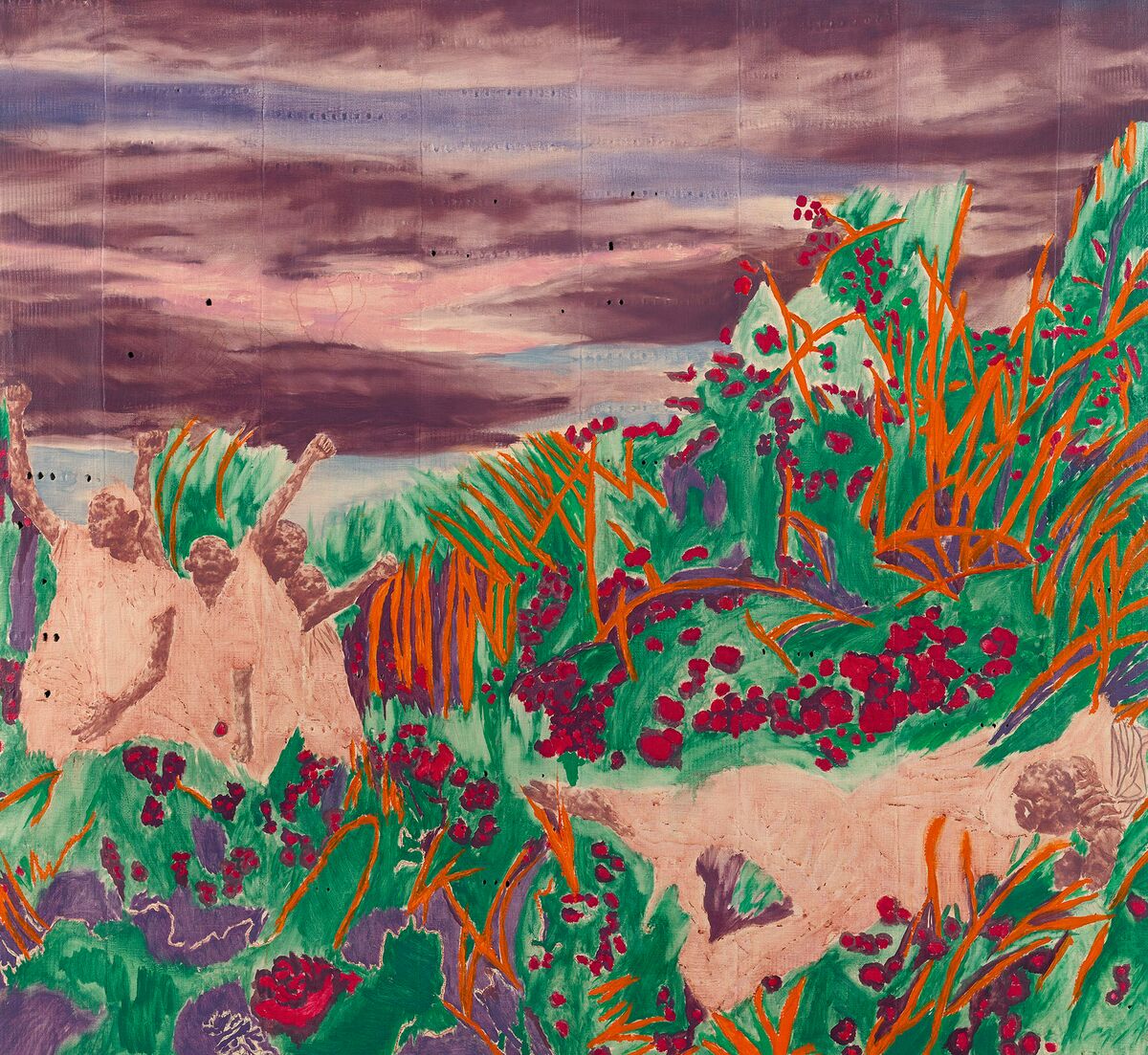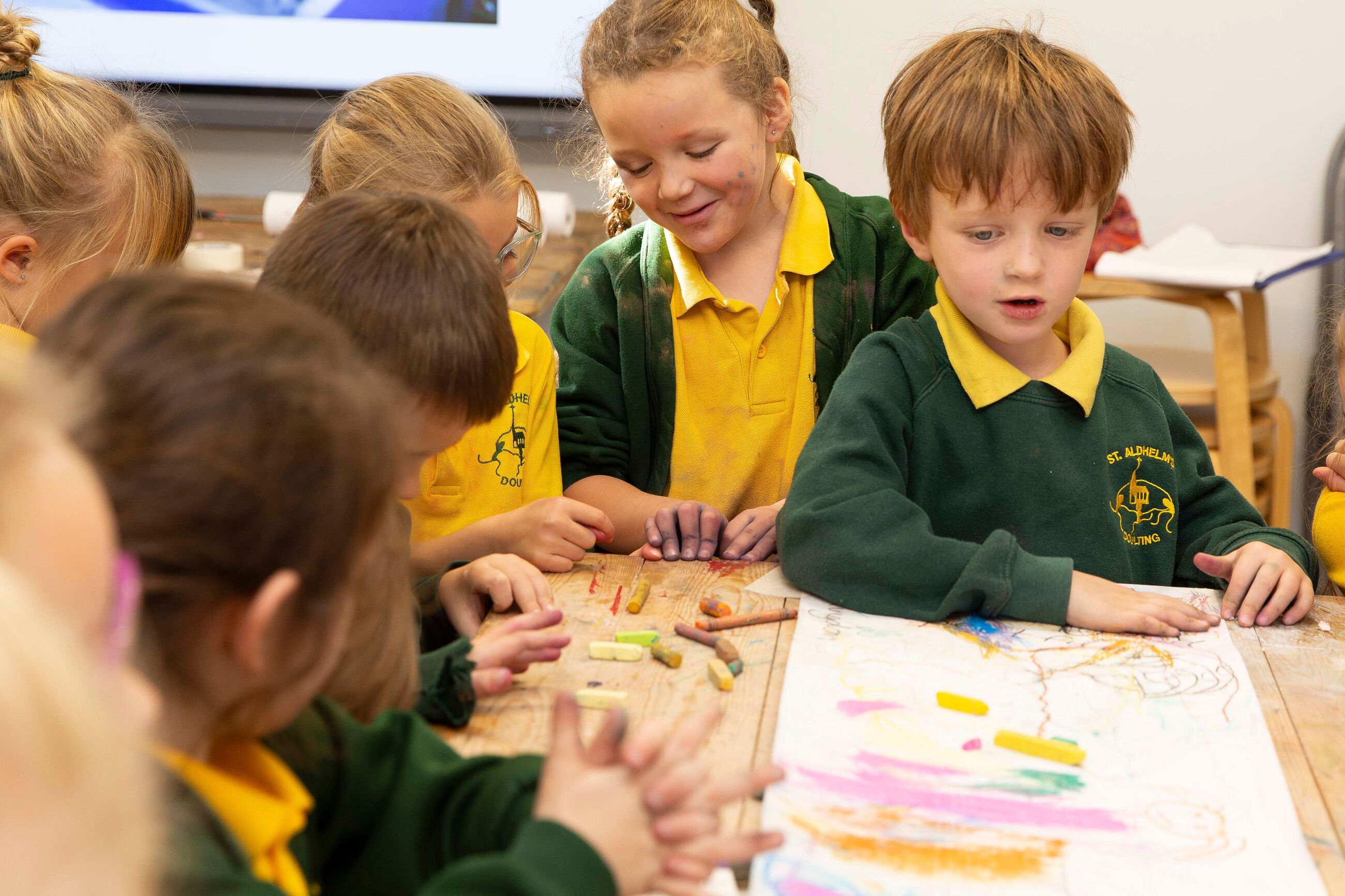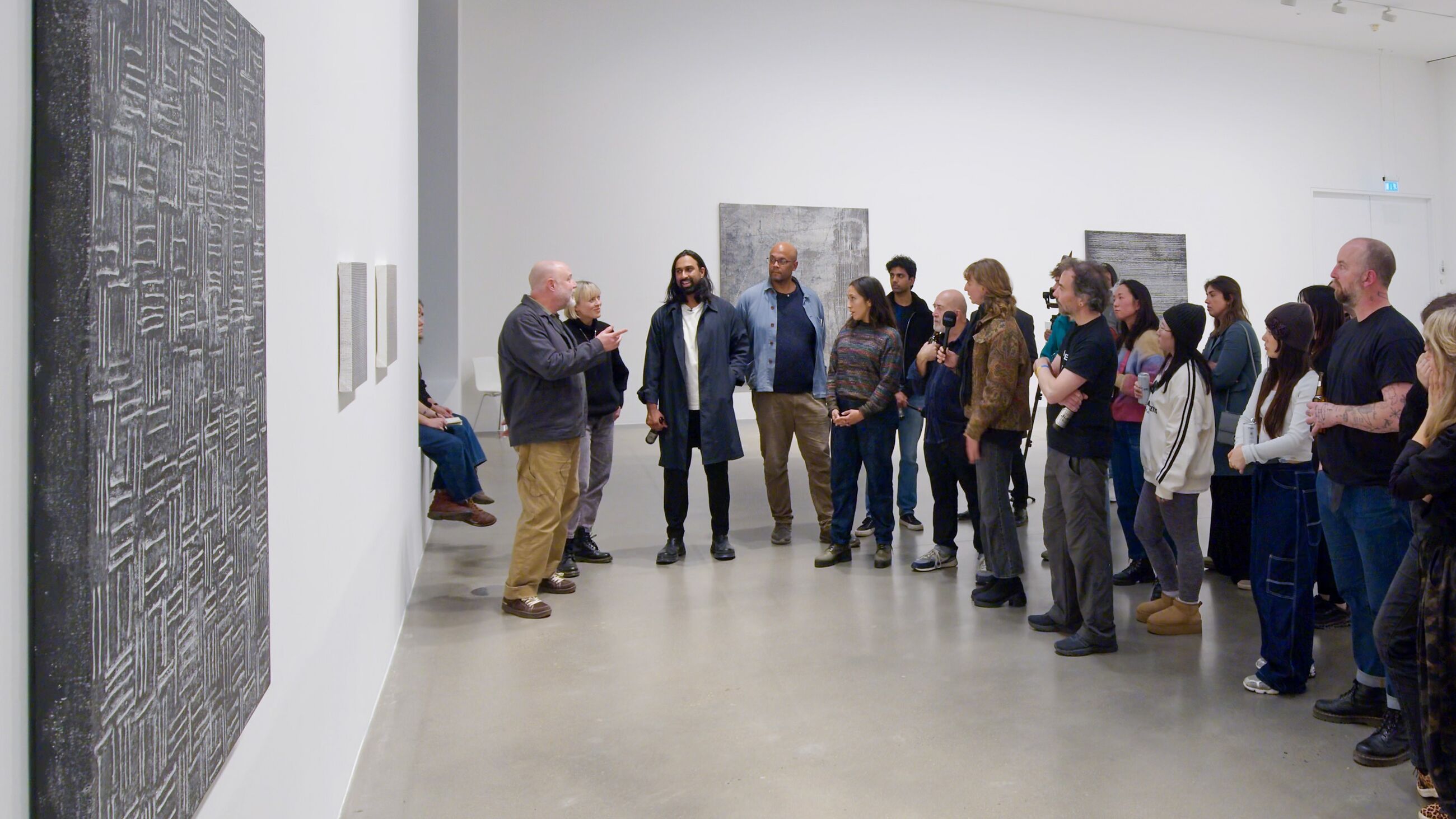Exhibition Learning Notes: ‘Uman. Darling sweetie, sweetie darling’

Uman, 2023. Photo: Luigi Cazzaniga
Exhibition Learning Notes: ‘Uman. Darling sweetie, sweetie darling’
Uman is a painter and sculptor currently living and working in Upstate New York. Her work is often inspired by the diverse cultural and geographical contexts she lived in during her childhood and teenage years. Uman was born in Somalia in 1980 and later moved to Kenya to escape the civil war taking place in her country of birth. Following some time spent in Denmark she eventually relocated to New York as a young adult. While making connections with fellow artists and creatives in New York, Uman continued to create an intuitive, multicolored visual language, drawing upon her lived experience.
Uman has had solo exhibitions at Nicola Vassell, New York NY; Eleni Koroneou Gallery, Athens, Greece; Fierman, New York NY; Anne De Villepoix, Paris, France; and White Columns, New York NY. She has been featured in group exhibitions at the Aga Khan Museum, Toronto, Canada; For-Site Foundation at Fort Mason Chapel, San Francisco CA; Institute of Contemporary Arts, London, UK; Karma, New York NY; and Ramiken Crucible, New York NY. In 2022, she was the recipient of the inaugural grant for The Cube at TRIADIC’s FORMAT Festival in Bentonville AR.
Making her work
‘I don’t follow a lot of rules. And I think that helps me, because my mind is not restricted. I’m impulsive. Sometimes I start from a figure, and it mutates into something else, into an abstract composition. I just go by my instincts.’
(The Brooklyn Rail, 2023).
The use of intense, bright colors is a central feature of Uman’s paintings combining the use of oil paint with acrylic, oils sticks and collage techniques. Uman’s painting process is slow and gradual, and she often leaves a painting for some time before returning to work on it to see what might emerge. This involves the application of acrylic to canvas followed by the superimposition of contrasting colors, with primary colors being a particular favorite of the artist. Canvases are sometimes not primed in advance of painting as Uman appreciates the textural nature of raw canvas and wants it to be part of the finished painting itself. As Uman works in her studio, she often paints to the accompaniment of music which has a wide range of references from Mozart to Metallica, all helping to create a mood for her working environment.
Sources of subject matter
The subject matter of her work moves between figuration and abstraction, and it regularly draws upon memories from her East African childhood, including the colorful textiles of Somalia and Kenya with references to Arabesque design and calligraphy. The natural world is also a recurring abstracted theme within her work and makes its appearance as elements remembered from African deserts or as aspects from the rural landscapes close to her current home in Upstate New York. Dream imagery and the symbolism such dreams might represent are important subject matter in Uman’s paintings.
‘I never use a lot of pigment because I like my work to look washy, like how watercolours look’
(As If Magazine, 2022).
What does the exhibition look like?
On entering the exhibition, the viewer is immediately struck by the bright and intense use of coloring in Uman’s paintings. Luminous primary colors applied in acrylic, oil and oil stick wash over the canvases. Such use of bright color does not always necessarily represent joyous content for the artist, many moods and perspectives are in fact present within her paintings.

Uman, Samaki in the ocean, 2023 © Uman. Photo: Sarah Muehlbauer
Uman’s personal aesthetic language of circles, dots, geometric shapes and biomorphic forms all weave stories drawn from childhood memories and a life of movement and change. She has always had a fascination for textile and fabrics, especially the highly decorative and colorful clothing of East Africa. The insertion of reflective materials into some of her canvases hint at the ancient tradition of ‘shisha’ often seen in clothing from Africa and certain parts of the Muslim world.

Uman, To Infinity, 2023 © Uman. Photo: Sarah Muehlbauer
What are the major themes within the exhibition?
Autobiography
Much of Uman’s creative practice revolves around intuitive and instinctual representations of her own experiences and influences. In describing the content of many of her paintings, she has stated ‘the ones that don’t look like self-portraits are self-portraits... In a sense, everything I do is biographical on the canvas.’
(ARTnews, 2023).

Uman, Untitled (detail), 2023 © Uman. Photo: Sarah Muehlbauer
Natural and urban environments
Within Uman’s paintings, she regularly incorporates elements of the natural world into her explorations. Inspiration is drawn from landscapes that she grew up in, from Eastern African deserts to the rural landscapes near her home in Upstate New York. In some canvases the natural and urban worlds seem to exist together with the viewer left to decide whether they are in harmony with each other or in an uneasy juxtaposition.
Dreamscapes and memories
The act of dreaming and remembered dreams are often the primary sources of inspiration for Uman’s paintings. The layering of these psychological states of being onto her canvases in a colorful kaleidoscopic manner invite the viewer into fantastical world’s which are left open to interpretation. Memories of the artist’s childhood and youth in East Africa and Europe while not explicitly obvious within the paintings are sometimes present via color, shape and outline.

Uman, BBC London in These Streets, 2023 © Uman. Photo: Sarah Muehlbauer
What other artists does her work relate to?
Henri Matisse (1869 – 1954) was a French painter, sculptor, printmaker and draftsman known for his bold use of color.
Chris Martin (b. 1954) is an American abstract painter living and working in New York.
Bjarne Melgaard (b. 1967) is a Norwegian artist working in painting, installation and sculpture.
Rene Ricard (1946 – 2014) was an American poet, painter, actor and art critic.
Other Hauser & Wirth artists to consider:
Firelei Báez (b. 1981) is a New York-based artist who creates colorful works on paper and canvas, large-scale sculptures, and immersive installations. She combines representational cues that span from hair textures to textile patterns, plant life, folkloric and literary references, and wide-ranging emblems of healing and resistance.
Mark Bradford (b. 1961) is an American contemporary artist best known for his large-scale abstract paintings created out of paper.
Louise Bourgeois’s (1911 - 2010) work moves between abstraction and figuration and explores themes of memory, relationships and psychological states.
Glossary
Abstraction
The quality of dealing with ideas rather than events and freedom from representational qualities in art.
Autobiography
The telling of one’s own life story in a selected medium (art, literature, film etc).
Calligraphy
An art form related to writing that utilizes inscriptions that can either be read or utilized for non-readable artistic purposes.
Figuration
The act of representing shapes, forms and/or figures.
Juxtaposition
Placing things or concepts beside each other creating a compare-and-contrast situation.
Lived experience
Life events that an individual themselves are navigating and may inform one’s personal knowledge of the world around them.
Shisha
A type of applied needlework that incorporates reflective materials sewn into garments. The word originates from the Persian ‘shisheh’ meaning ‘glass.’
Subject matter
The object, issue or intention of the artist within the creation of an artwork.
Discussion questions
Due to political instability in Somalia, the country of her birth, Uman moved and lived in many different countries and cultures as a young person. Art has therefore become an important method for her in remembering childhood memories. How does the creation of art keep us connected to our past?
‘I love to disappear in the work and tell a story; that’s how I look at painting, it’s an emotional place.’ The use of bright, intense colors is characteristic of Uman’s work. In what ways can the use of color assist storytelling and emotional impact in an artwork?
Dream imagery appears regularly in Uman’s paintings. Think about other artists and art movements that have drawn upon the psychology of dreaming. Compare and contrast these approaches to Uman’s practice of working.
Supplementary research
Uman’s Studio in Upstate New York is a Portal to a Kaleidoscopic World
Welcoming Uman to Hauser & Wirth in Partnership with Nicola Vassell Gallery
Resources
1 / 10









